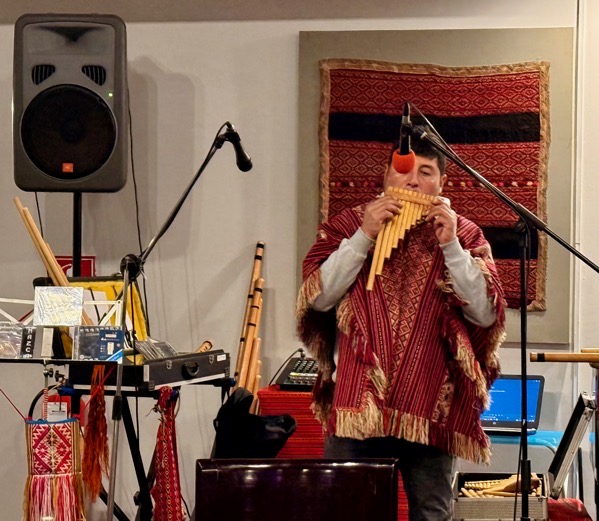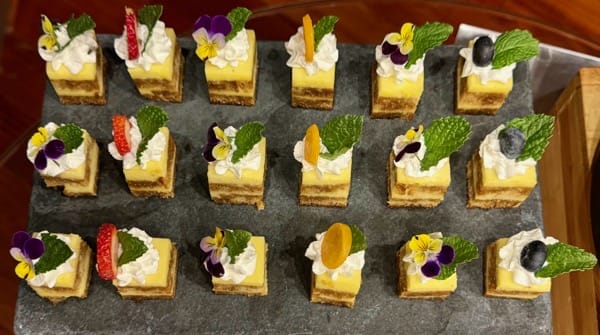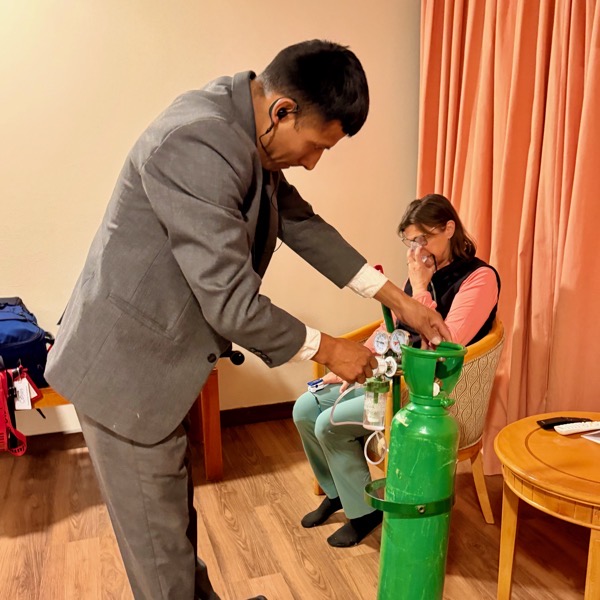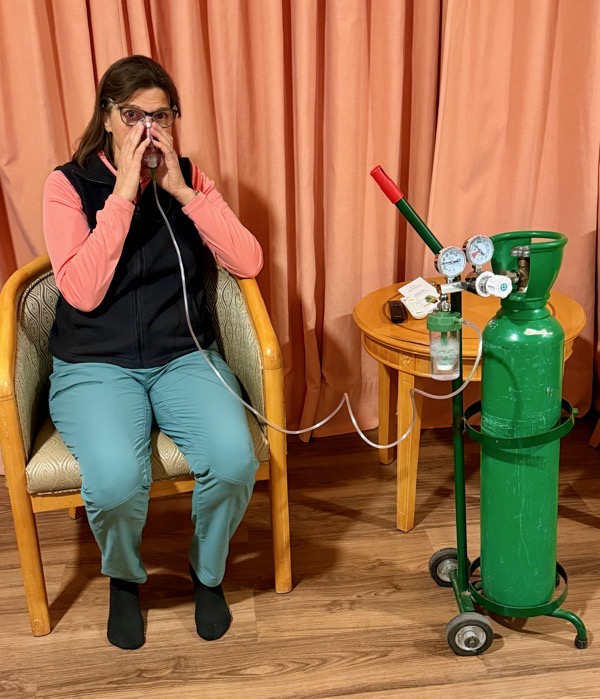Friday, August 15, 2025
Today was scheduled as a full day of exploring the Sacred Valley. Upon waking, Jane wasn’t feeling well, so I brought her some coffee from the restaurant before heading back to eat breakfast with a few of my fellow WolfTrekkers. Afterward, Jane and I took the opportunity to stroll around and soak in the morning beauty of the Aranwa resort grounds. We were both amazed by the lush landscaping and captivated by the onsite animals — alpacas, colorful parrots, and darting hummingbirds.
Later, John joined us for a hike along the shores of the Urubamba River. It felt surreal to walk beside such a storied river, one that countless regional explorers have described. Though calm and low now during the dry season, its quiet power still resonated. At one point, we came across a cable spanning the river, with a metal cage hanging from its lowest arc over the water. John and I managed to pull it over to our side, but ultimately decided against trying to cross in it. We later learned that some of the resort’s staff still use it to commute to work.
After our riverside exploration, Jane and I rushed back to the room, grabbed our day bags, and made it to the front of the resort just in time to board the bus for our 9:15 a.m. departure.
—— Aranwa Hotel and Wellness Center ——
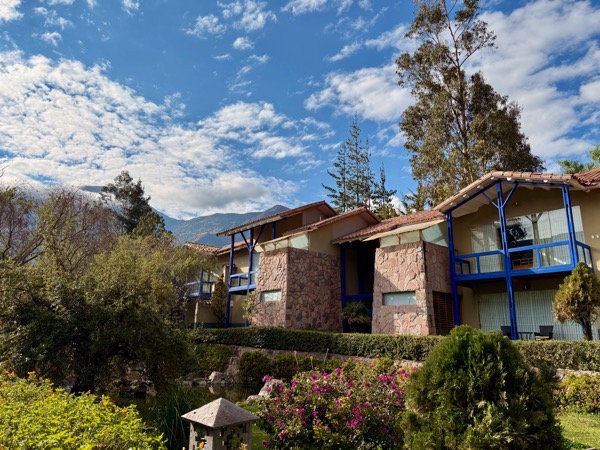
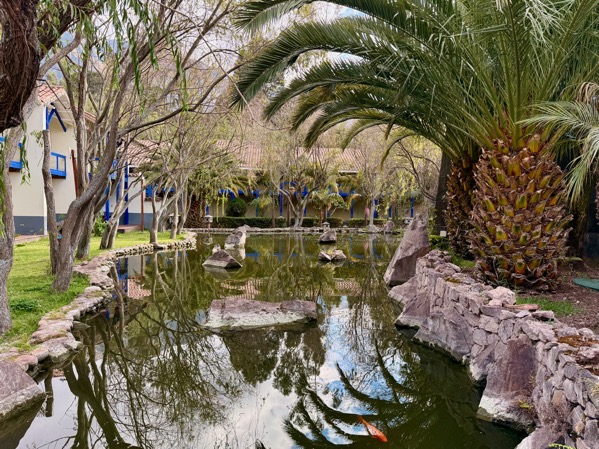
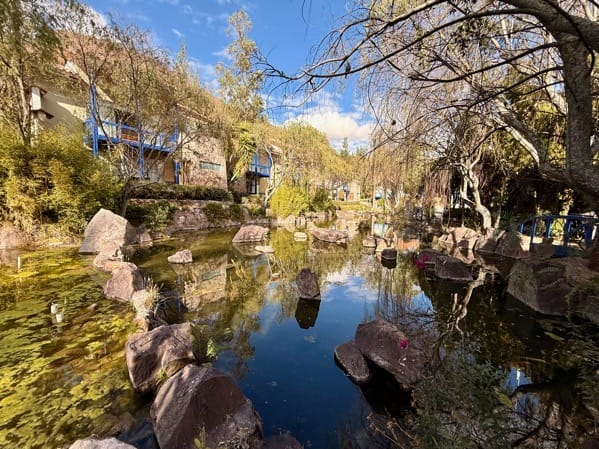
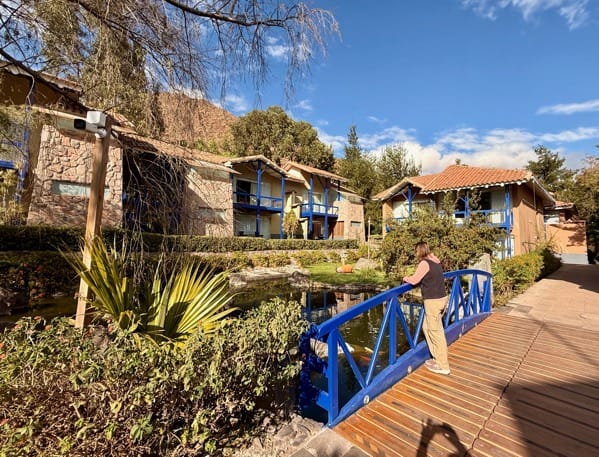
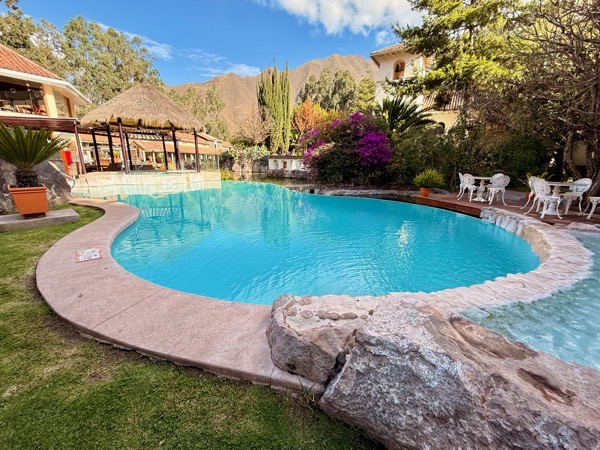
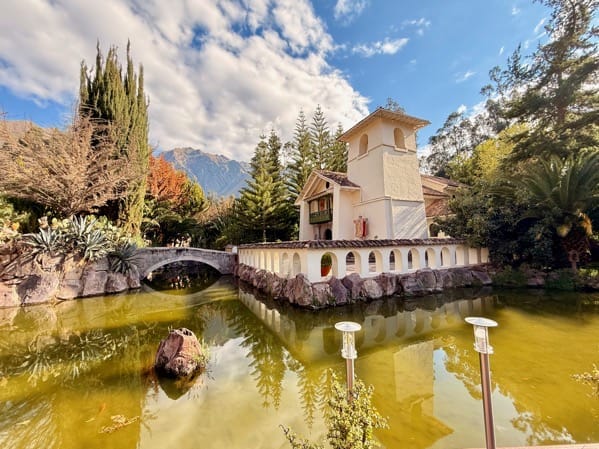
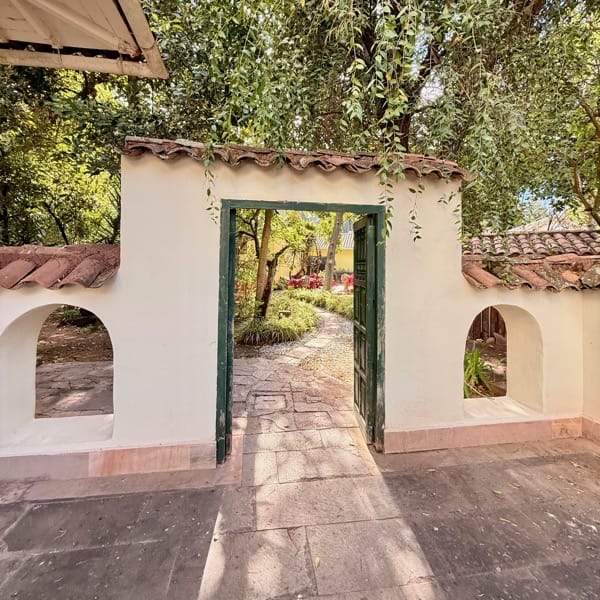
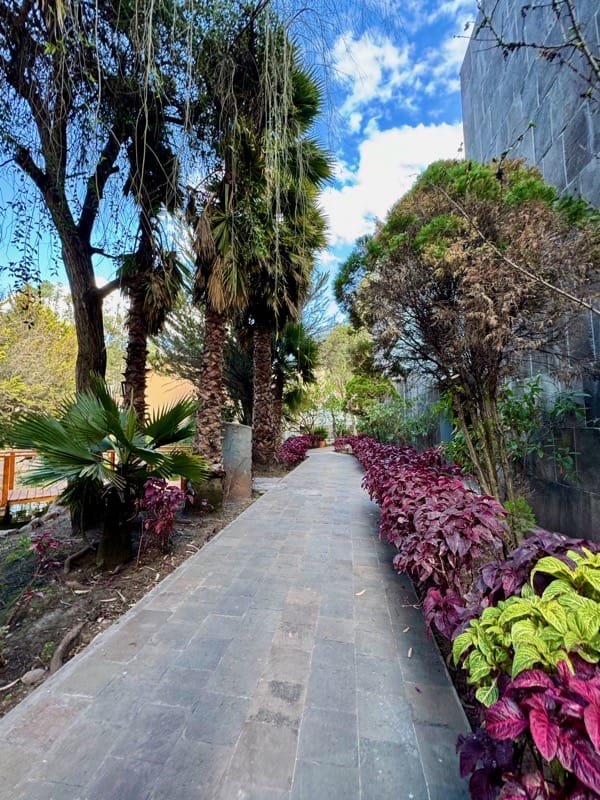
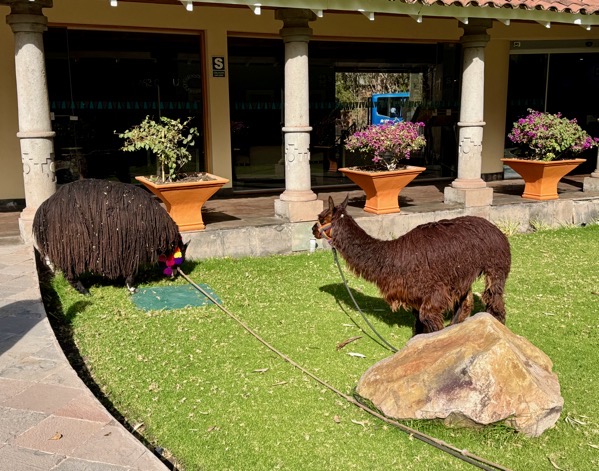
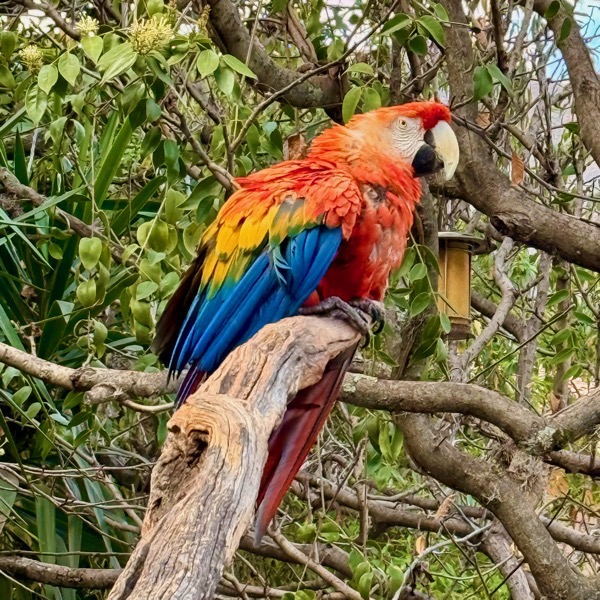
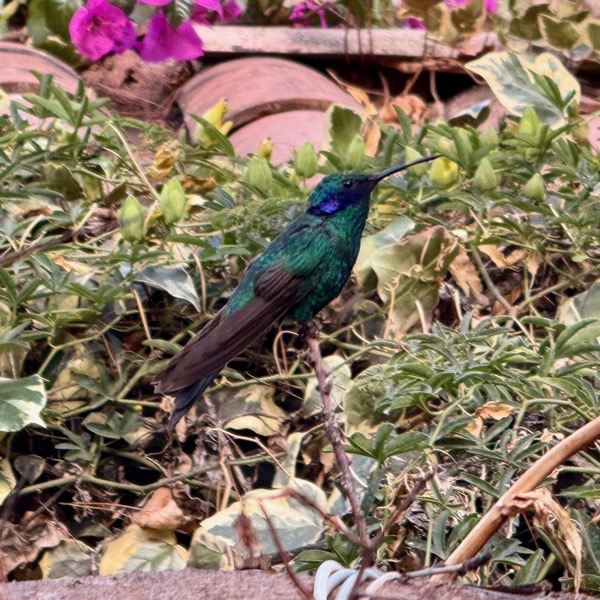
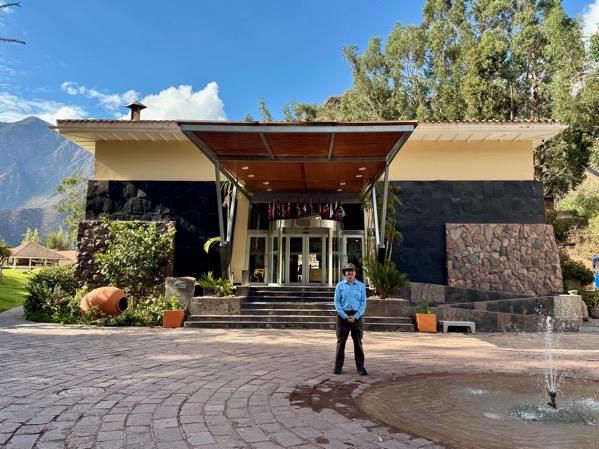
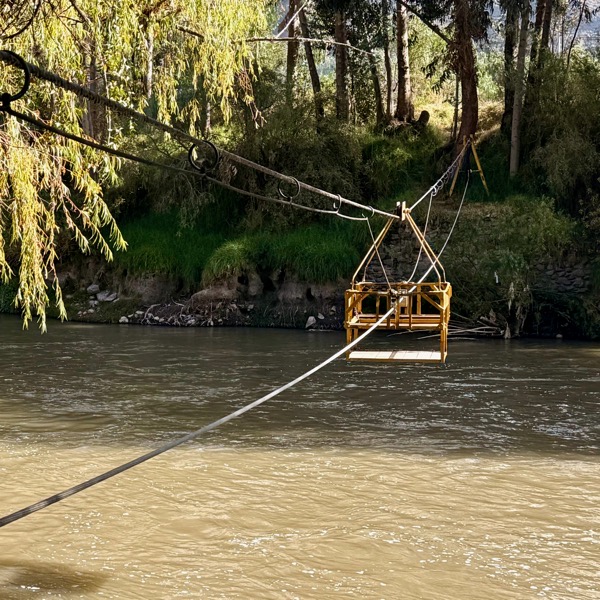
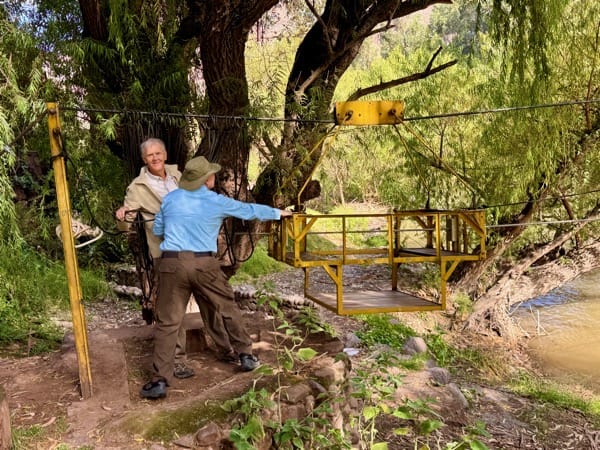
Our first destination of the day was the historic Inca town and archaeological site of Ollantaytambo. However, not far from there, the bus made a brief stop at a roadside shop—partly to give us a chance to use the restroom facilities, but also to allow us to purchase some recommended gear for today’s hike and future excursions. Jane ended up buying a high-quality adjustable walking stick (with the required rubber tip) and a water bottle holder made with traditional Andean weaving, all for just 45 soles (about $12.50). Several other Wolftrekkers also took advantage of these bargains. After our quick stop, we reboarded the bus and continued on toward Ollantaytambo.
—— Provisions Shopping ——
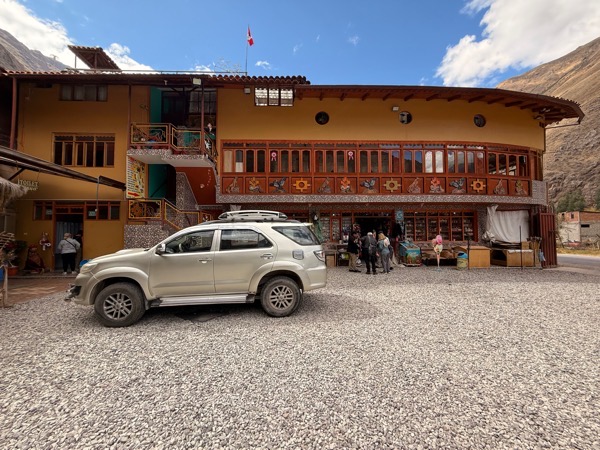
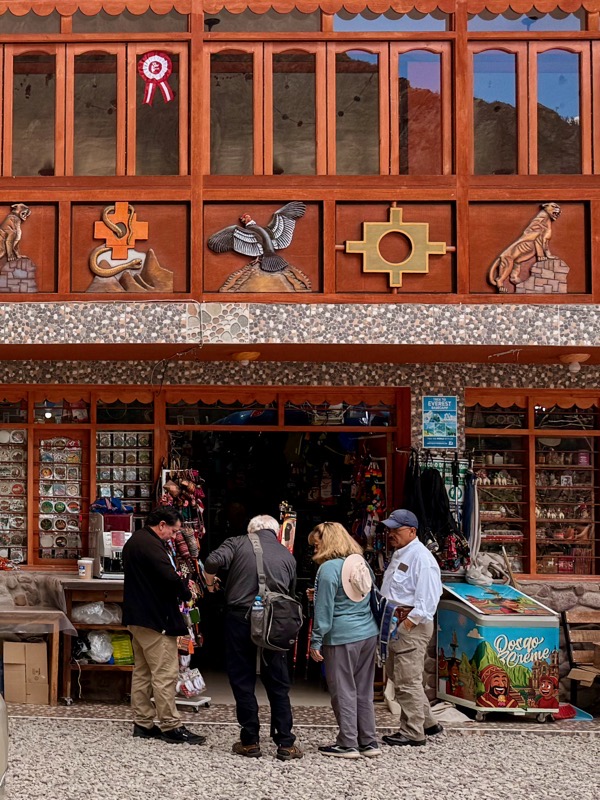
Ollantaytambo was originally built by the Incas as a royal estate for Emperor Pachacuti in the 15th century and later evolved into a strategic military, agricultural, and religious center. From where we disembarked in town, we could glimpse the impressive terraced fortress rising dramatically on the hillside, showcasing the remarkable engineering and stonework of the Inca civilization. During the Spanish conquest, Ollantaytambo was the site of a rare Inca victory against the conquistadors, led by Manco Inca Yupanqui.
Today, Ollantaytambo remains one of the best-preserved Inca settlements, with a living town that still follows the original Inca street grid. It also serves as a major gateway for travelers heading to Machu Picchu, with a scenic train station nestled in the valley and guides regularly setting out along the Inca Trail. Carlos led us on foot through some of the ancient streets, pointing out the contrast between original Inca masonry and more modern constructions—including the noticeably different heights of the doorways.
—— Ollantaytambo Town ——
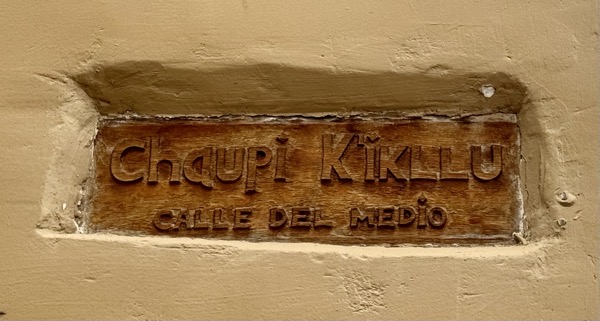
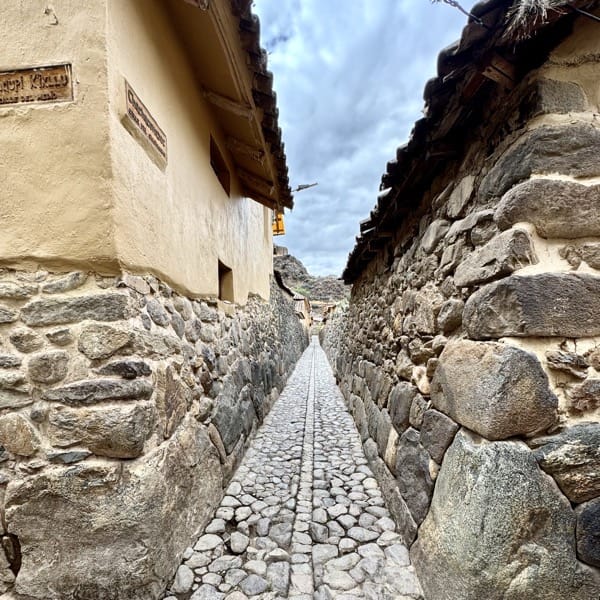
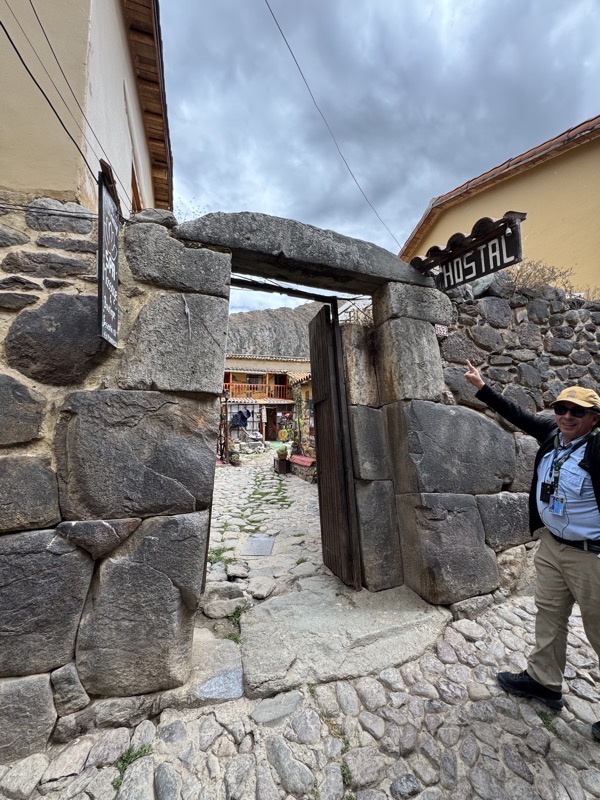
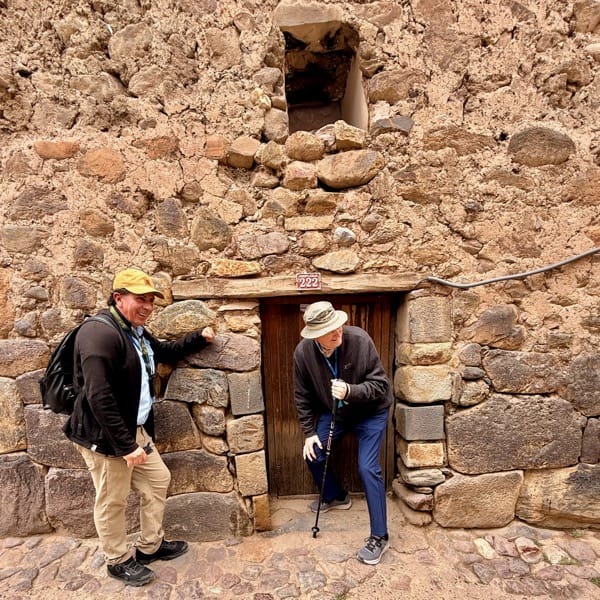
Carlos eventually led us to the traditional home of an indigenous family. We were graciously invited inside, where we had the rare opportunity to witness firsthand how the family lived. Inside the modest dwelling, guinea pigs—or cuyes—scurried freely across the floor, being raised indoors as a food source which is part of long-standing Andean tradition. A simple sleeping loft stood above us, and the walls were adorned with beautiful handmade textiles for sale, each woven with patterns rich in cultural meaning. Most striking of all was a small altar that featured the preserved skulls of ancestors, a powerful reminder of the deep reverence for lineage and heritage in Andean culture. It was truly an eye-opening and humbling cultural experience.
—— Indigenous Home ——
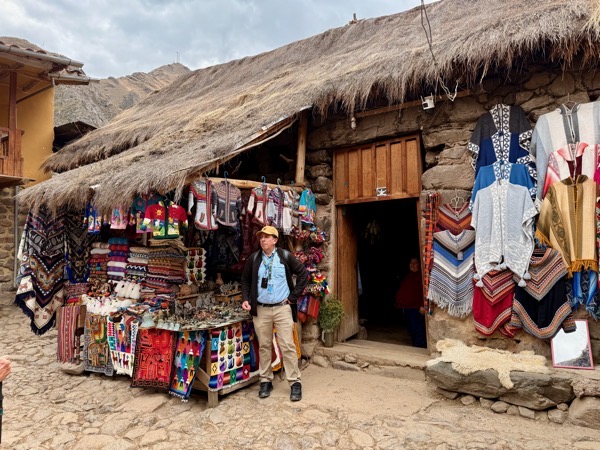
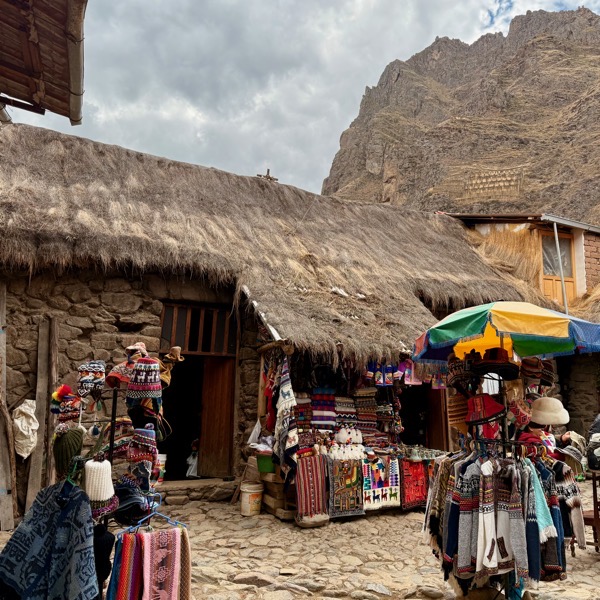
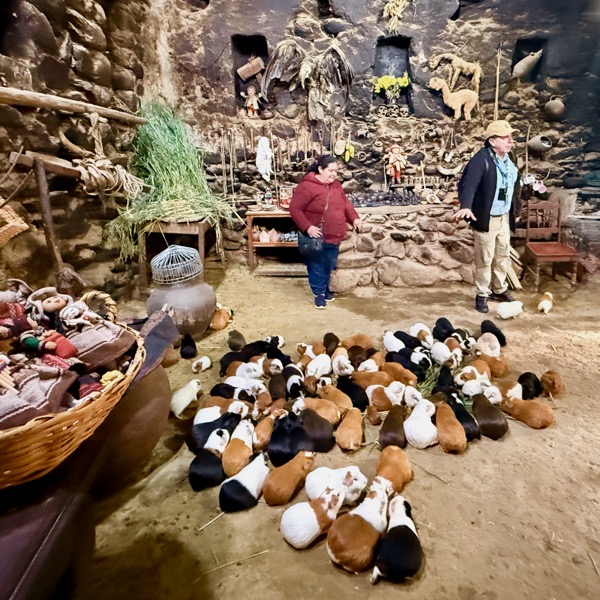
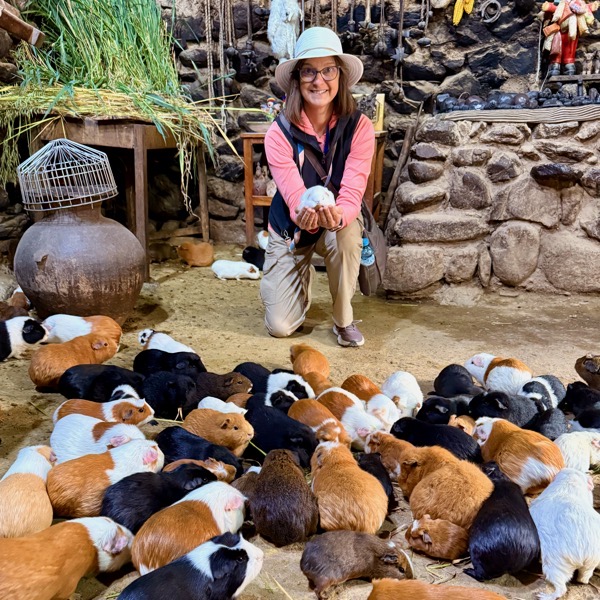
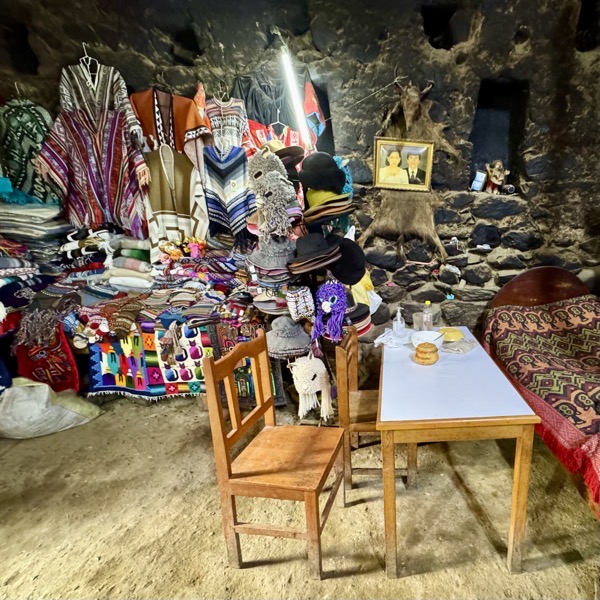
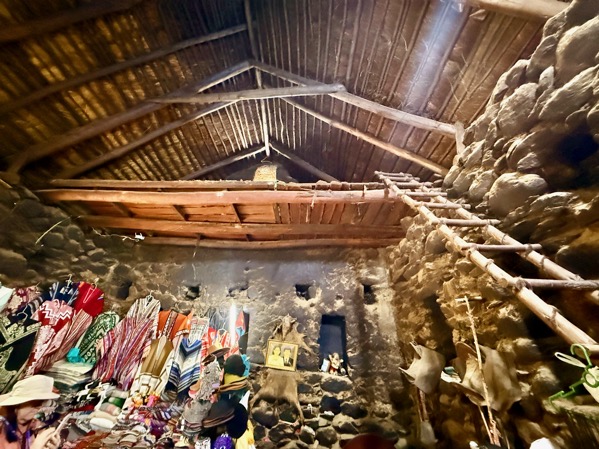
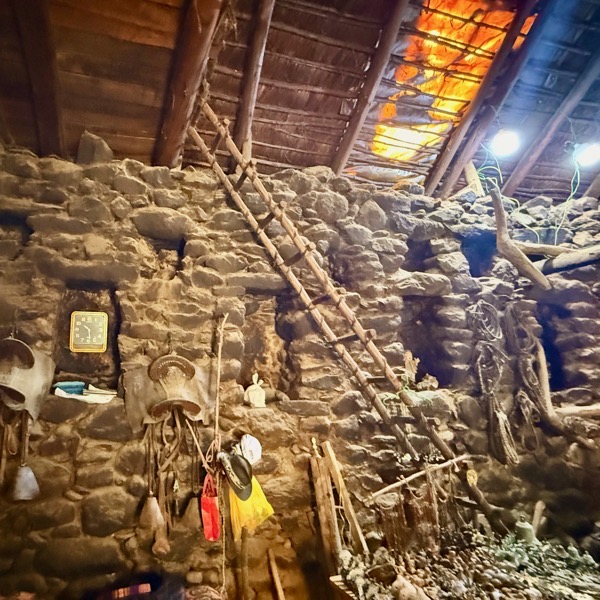
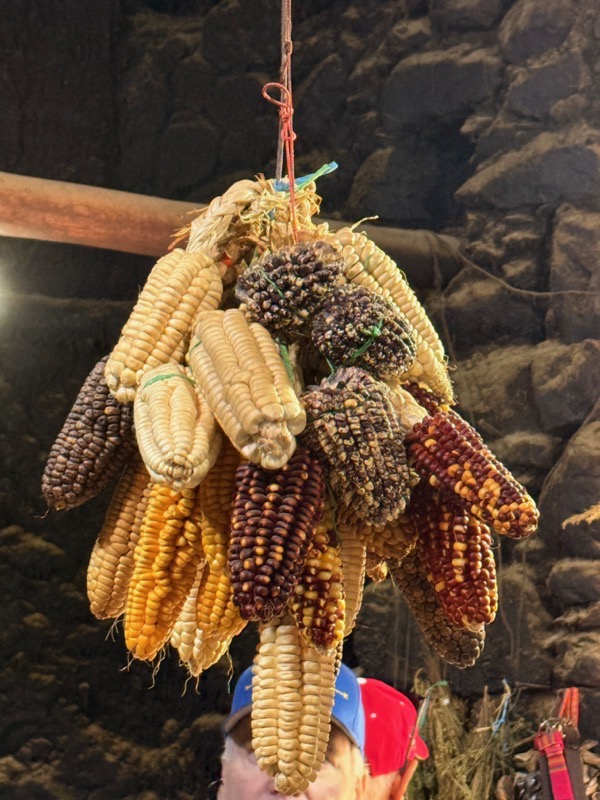
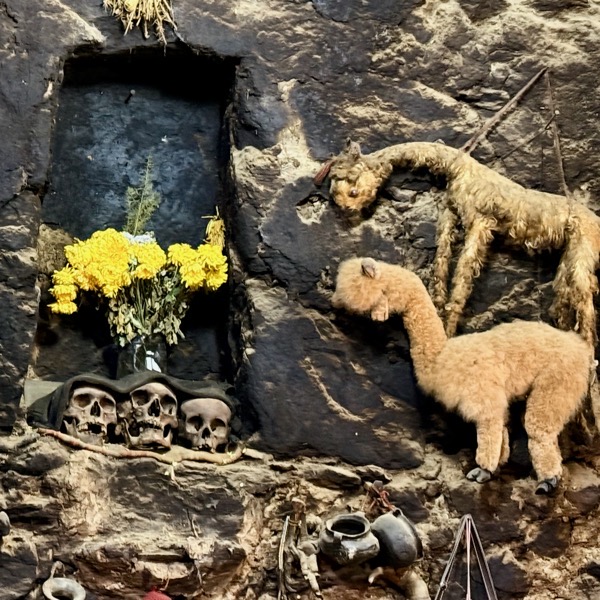
Finally, we followed Carlos to the entrance of the National Archaeological Park of Ollantaytambo (Parque Arqueológico Nacional Ollantaytambo), where we were immediately struck by the sheer scale and precision of the ancient Inca fortress rising above us. Massive terraces carved into the mountainside led the eye upward to imposing stone walls and sacred structures perched high above the valley floor. Though these enormous terraces appeared daunting, modern stone steps had been added, making the climb to the top more manageable—and so we began our ascent. Members of our group climbed at their own pace, while Jane and I stayed close to Carlos, often turning back to take in the stunning views of the Sacred Valley unfolding behind us.
At one point, Carlos paused to point out the remains of the Temple of the Sun on one of the terraces. Although the original stone carvings had been deliberately destroyed long ago, he showed us an image in a guidebook that depicted what the geometric and puma-shaped carvings would have looked like in their full glory. From the same vantage point, Carlos directed our gaze across the valley to a cliff face where ancient Inca storage structures still clung to the rock. Nearby, etched into the cliff’s edge, was the distinct profile of a stern-faced figure—believed to represent Wiracochan, the creator deity in Inca mythology.
Near the top, I had a minor misadventure: I dropped one of my AirPods into a room on the level below and had to squeeze through a narrow, steep crevice to retrieve it—thankfully without incident. After the successful recovery, we walked around the summit, taking in panoramic views of the fortress, the town below, and the surrounding mountains. We soaked in as much as we could before beginning the descent, which—though easier than the breathless climb—still demanded careful footing. Our group eventually reassembled at the park exit. As we were departed we were able to glimpse a vibrant street celebration with locals in traditional dress performing colorful dances. Moments later, we boarded our bus and departed, still buzzing from the morning’s unforgettable experience.
—— Ollantaytambo National Archeological Park ——
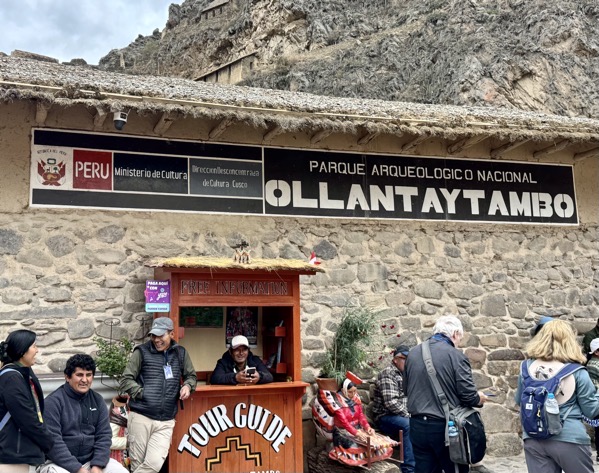
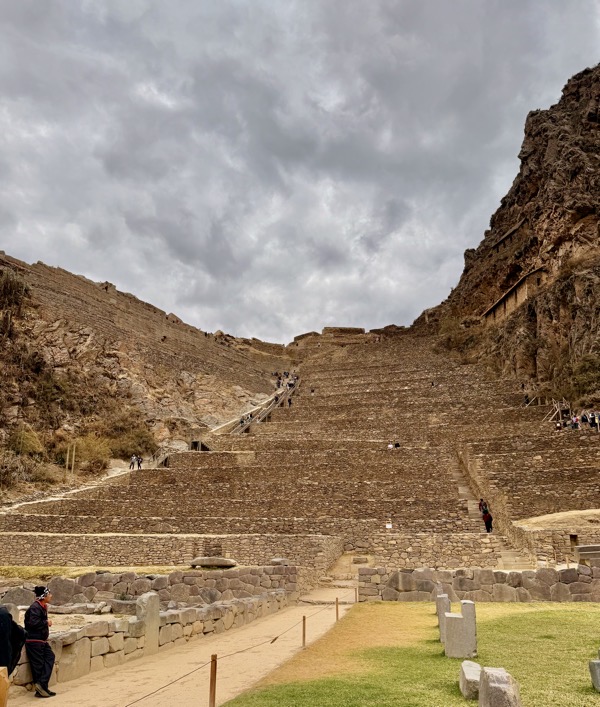
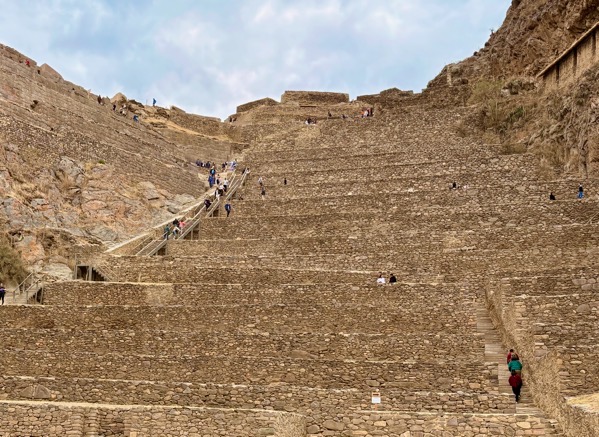
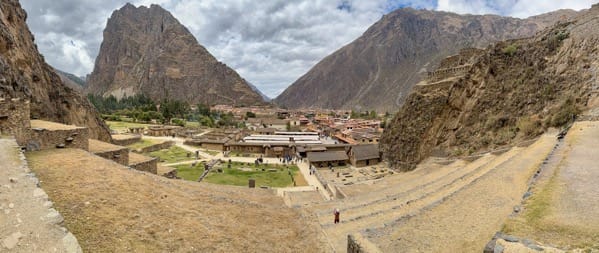
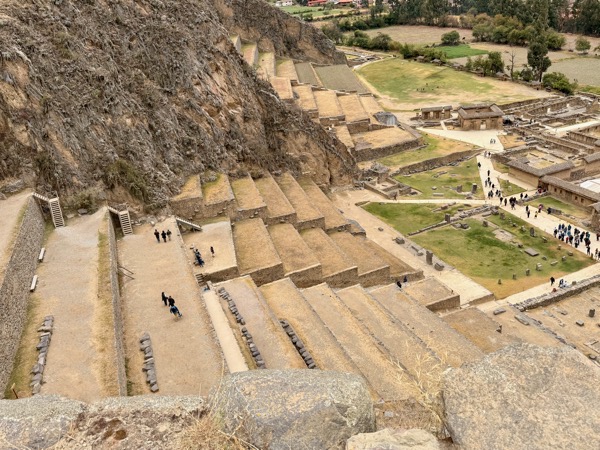
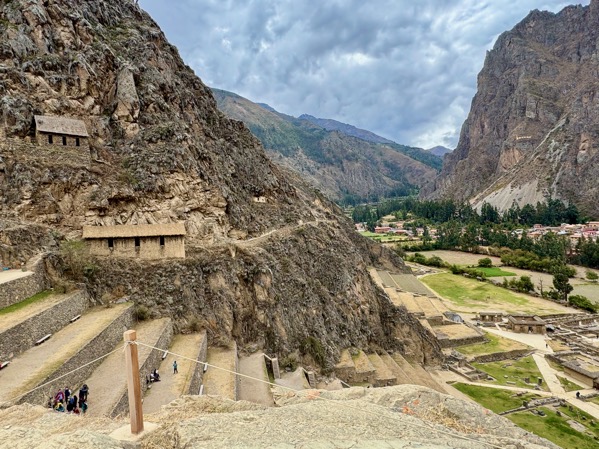
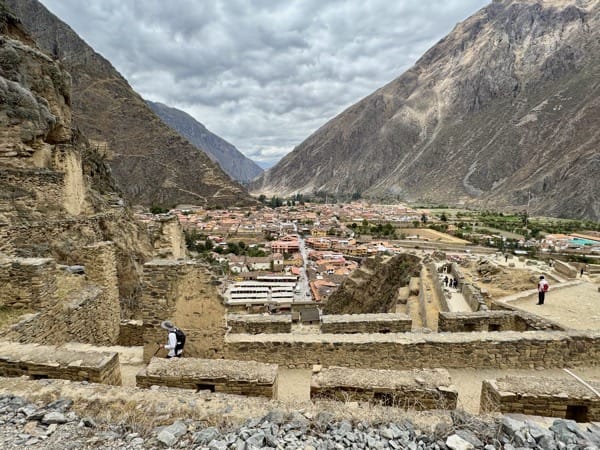
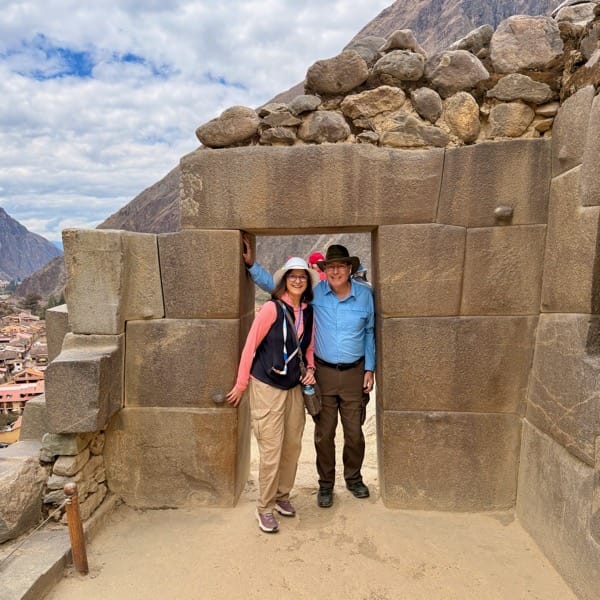
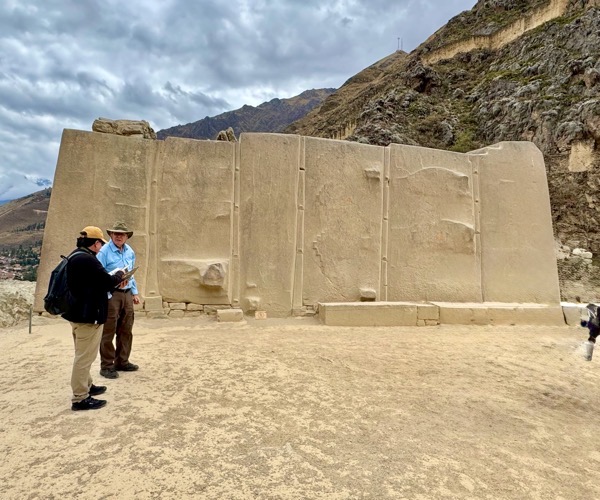
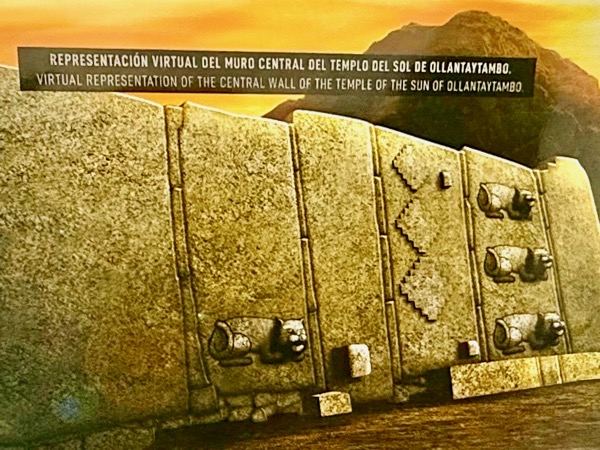
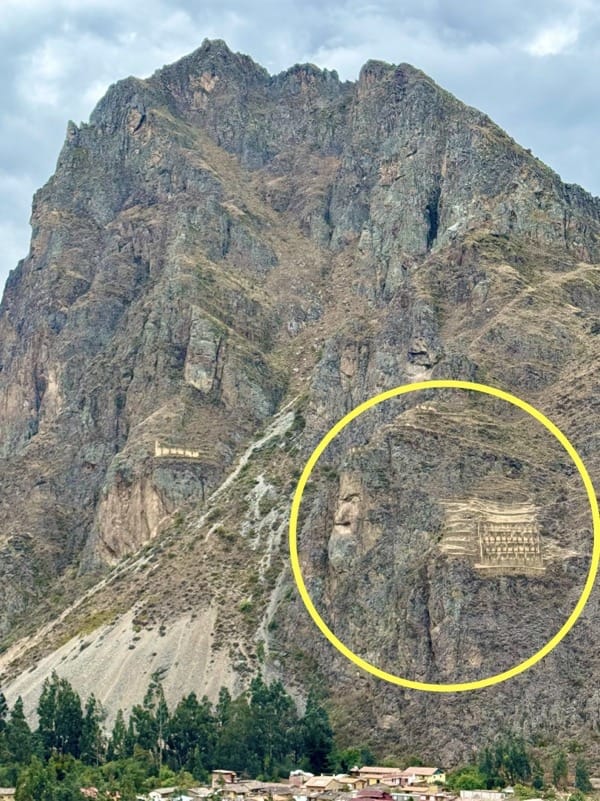
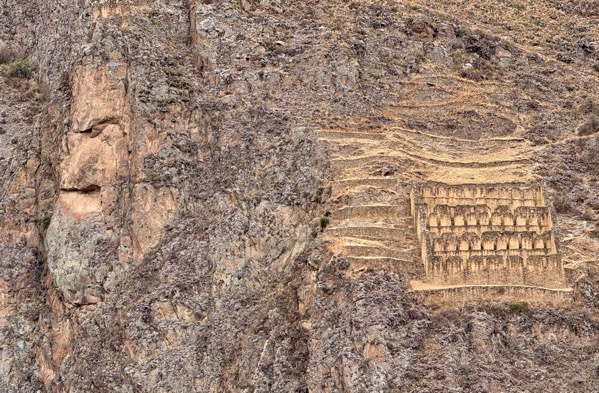
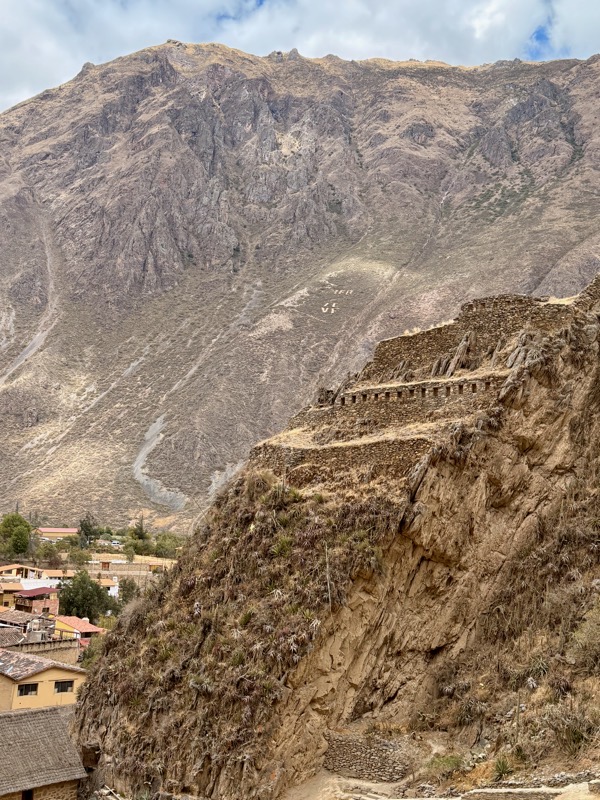
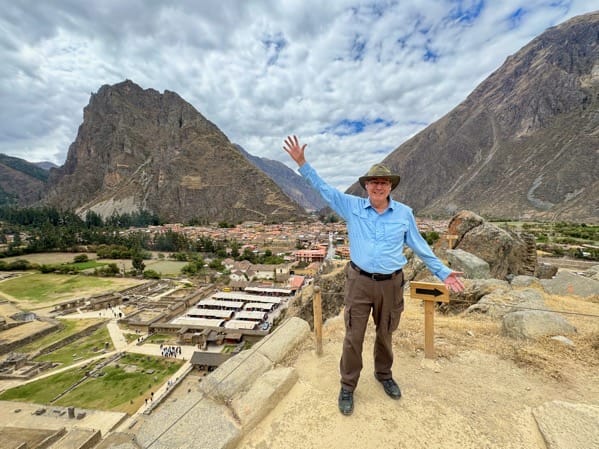
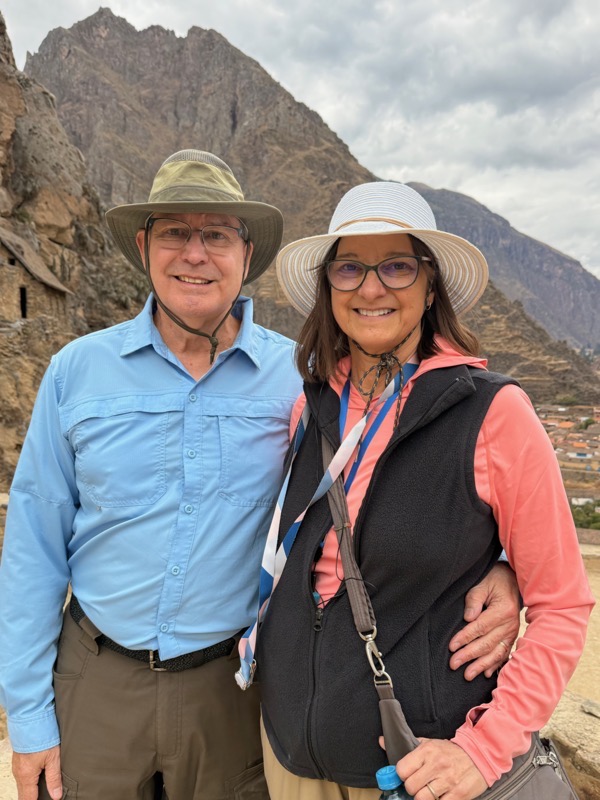
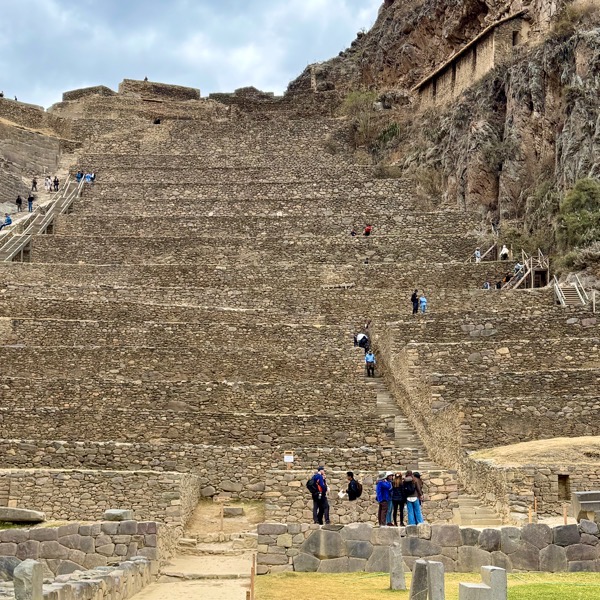
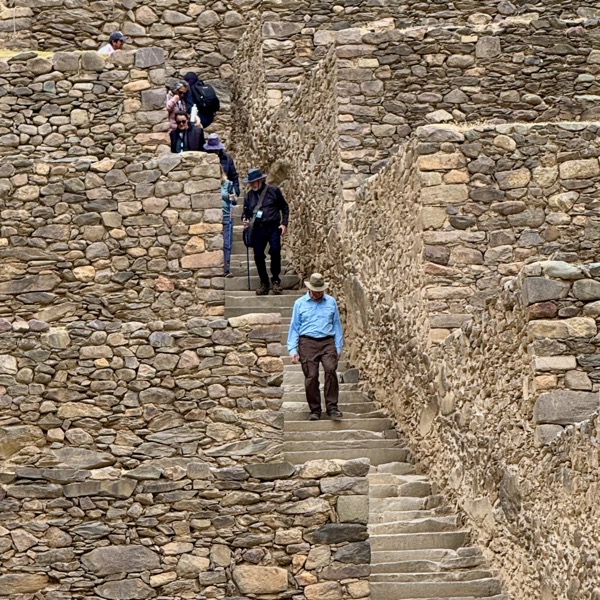
After about a 30-minute bus ride, we arrived at Wayra Restaurant in the charming town of Urubamba. (Wayra means “wind” in Quechua, a fitting name for a place surrounded by the breezes of the Sacred Valley.) We strolled through a couple of stylish indoor dining rooms before being seated in a covered outdoor area overlooking a grassy field, with horse stables visible on the far side.
Our meal was a delightful celebration of Andean ingredients, expertly prepared in wood-burning ovens. Peru, the birthplace of potato culture over 7,000 years ago, boasts an astonishing diversity of more than 4,000 native varieties. One of our dishes featured a colorful assortment of these local potatoes, each with distinct flavors and textures. Alongside this, we enjoyed perfectly grilled trout, a tempting selection of desserts, and a colorful plate of fresh local fruits.
After lunch, we were treated to a captivating horse riding show. Four horsemen, dressed in traditional Quechua attire, pranced gracefully around the grassy arena, demonstrating their expert horsemanship and the unique four-beat gait of their Peruvian Paso horses. The riders moved with remarkable smoothness, their horses’ steps barely causing any up-and-down motion, even at speed.
The performance grew more enchanting when a woman in a flowing red dress danced barefoot alongside one of the riders still on horseback, then later with a younger rider on foot. Finally, the chalan (Peruvian cowboy) Valerio brought his well-trained horse, Narciso, right up to where we were seated. Victor pointed out the distinctive features of this remarkable breed, and we even had the chance to pose with Narciso ourselves.
By 2 pm, our lunch and show concluded, and soon we were back on the road, energized by the rich flavors and vibrant culture we had just experienced.
—— Lunch and Horse Show at Wayra ——
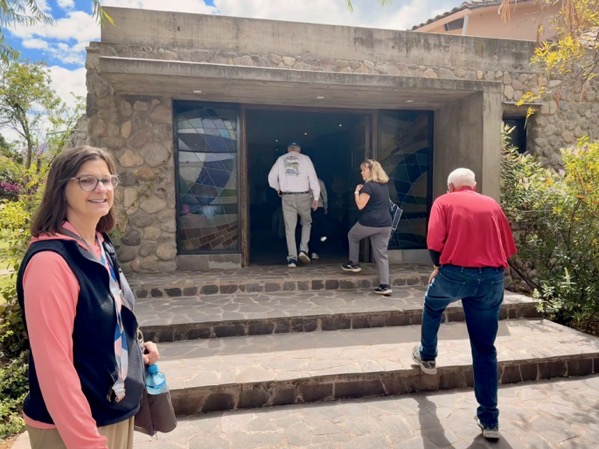
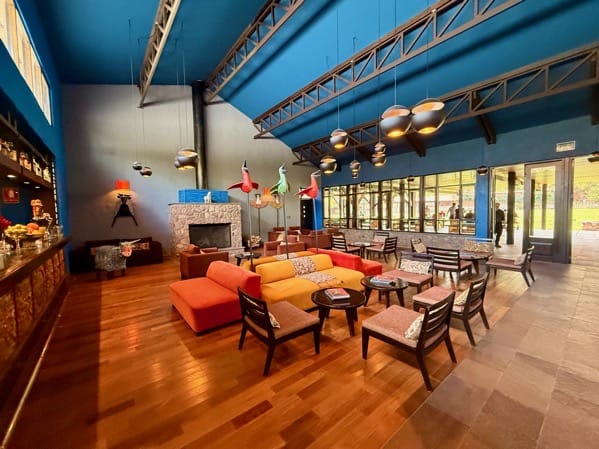
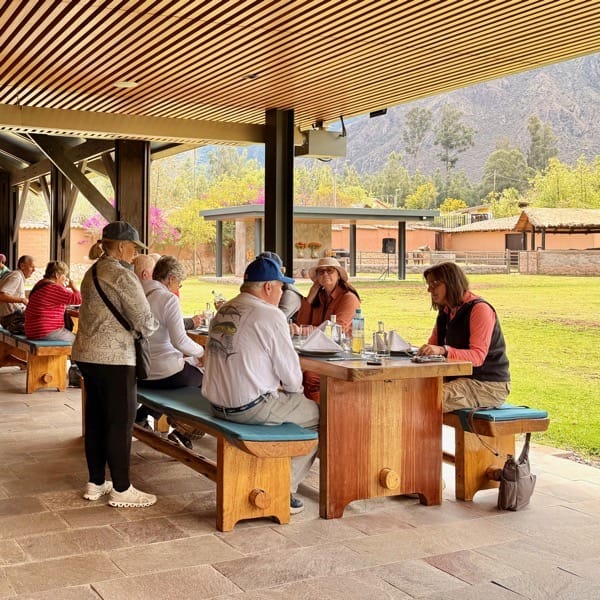
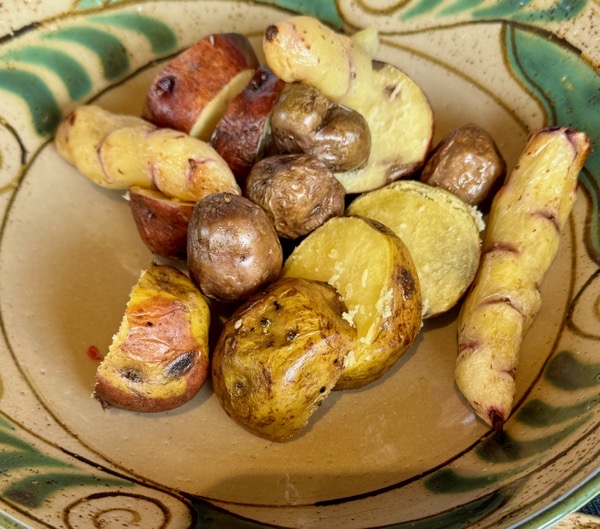
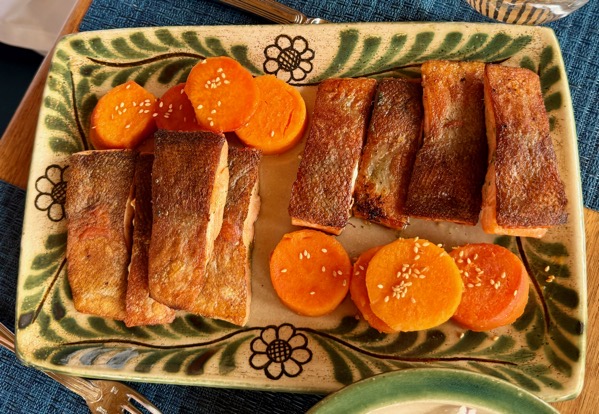
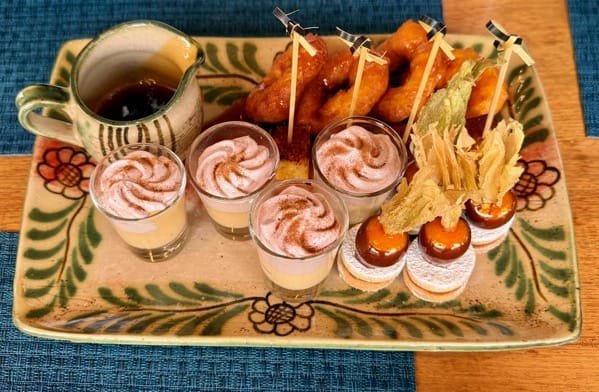
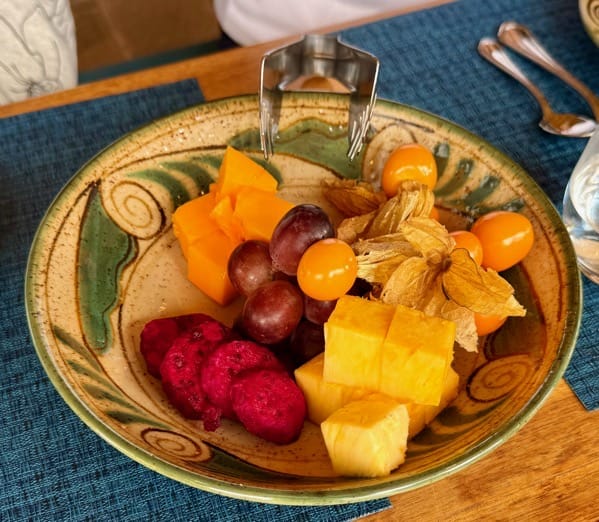
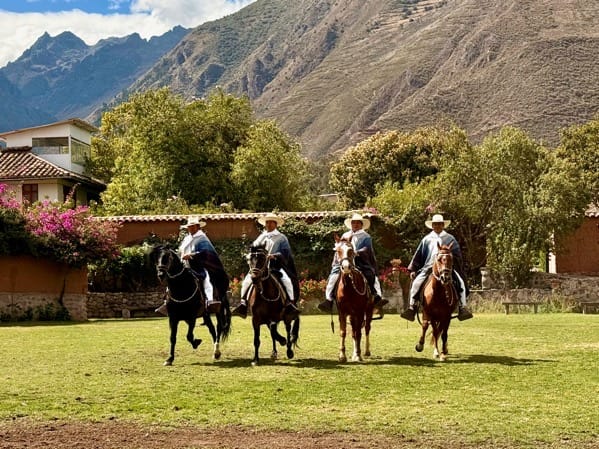
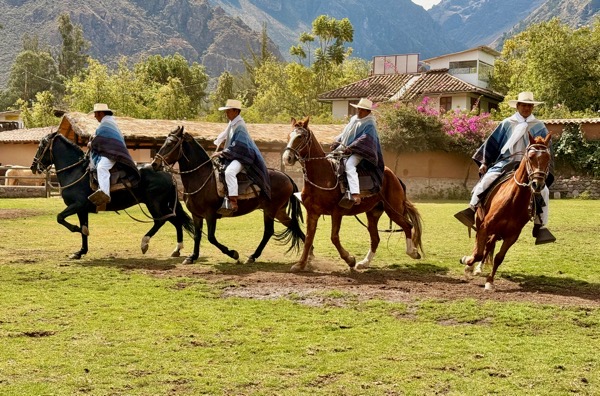
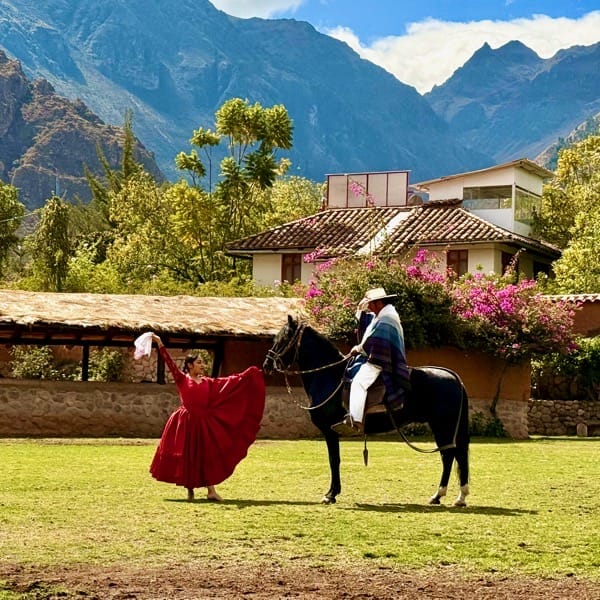
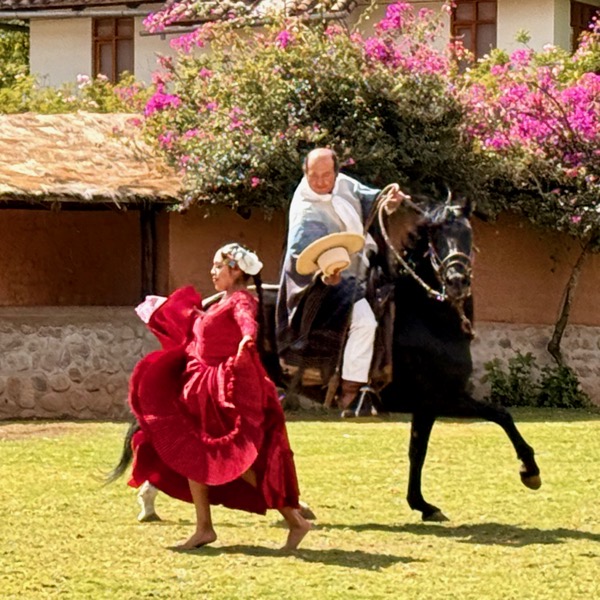
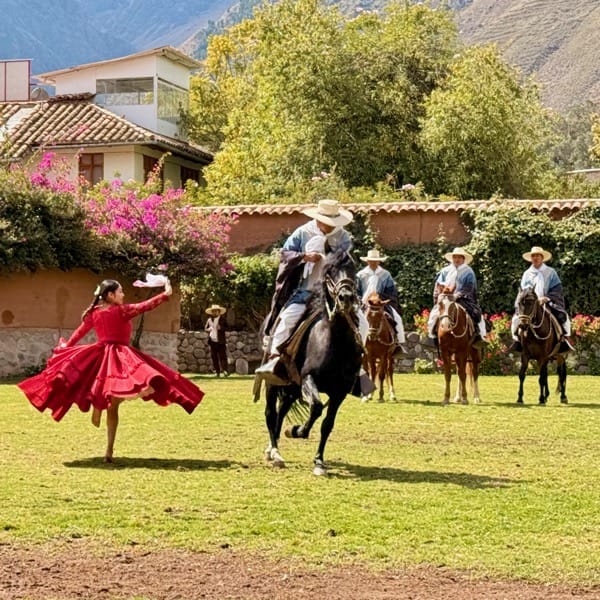
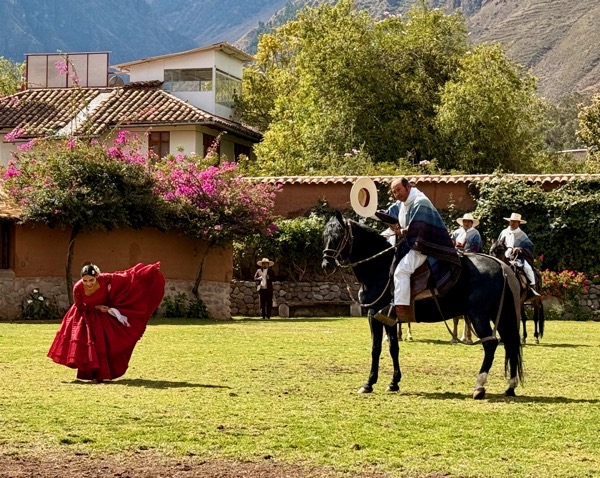
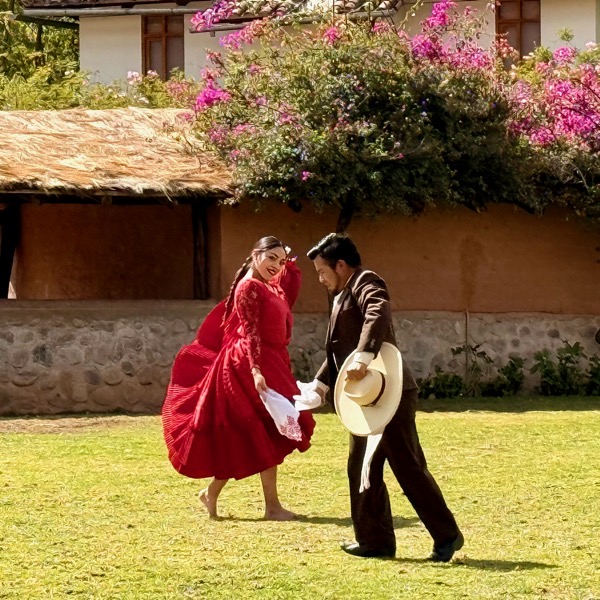
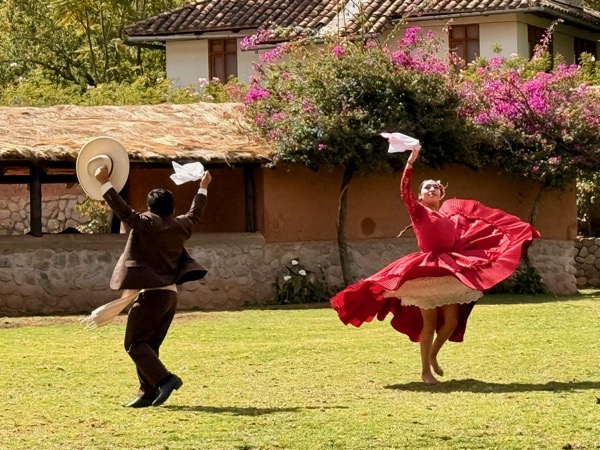
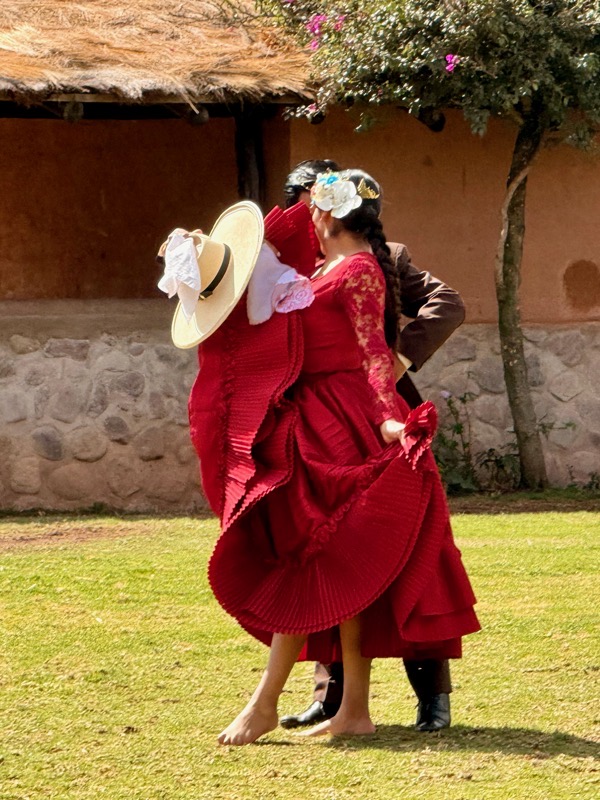
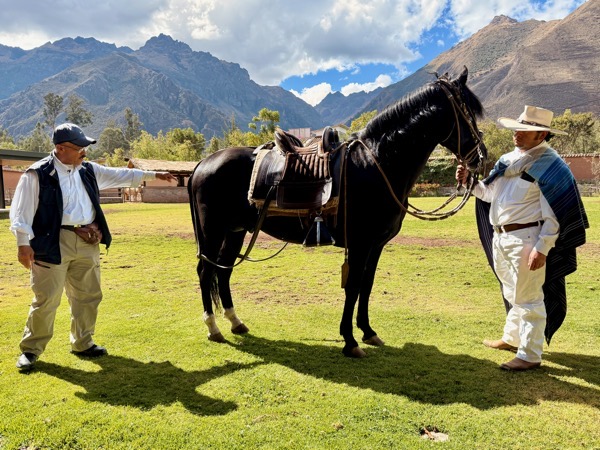
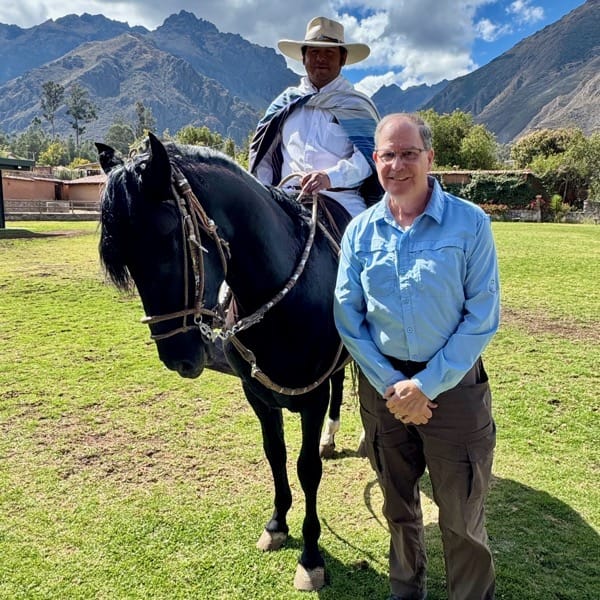
From Wayra, our bus began a steep ascent up the mountainside, zigzagging through sharp switchbacks that revealed sweeping views of the town of Urubamba nestled below. After a scenic climb, we arrived at the traditional Andean village of Chinchero, perched at a lofty 12,340 feet above sea level. Life here continues much as it has for generations, with residents maintaining age-old customs like weaving colorful textiles by hand and honoring spiritual traditions rooted in the land.
Upon arrival, we entered a walled courtyard. A sign above the entrance read “Munaypata Intiqhawarina,” a poetic Quechua phrase that may be interpreted as “Beloved Terrace of the Sun Viewpoint.” Inside the courtyard, we observed a bin of Guinea pigs scurrying around their own mini-town and were invited to feed a few friendly llamas before being guided into a ceremonial area where a local shaman awaited. To ward off the chill of the high-altitude air, we were each given heavy alpaca ponchos to wear.
The shamanic ceremony began with the careful preparation of an offering bundle—a sacred act meant to honor Pachamama (Mother Earth). Items like coca leaves, colorful confetti, grains, and sweets were thoughtfully added, symbolizing abundance, gratitude, and connection to the natural world. At the conclusion, the bundle was offered to the fire, accompanied by quiet prayers and blessings.
Afterward, we were treated to a vibrant demonstration of traditional natural dyeing techniques used in wool processing. Dressed in bright, handwoven clothing, the local women infused the presentation with warmth and humor as they showed how plants, roots, and insects create the vivid reds, yellows, and purples seen in their textiles. The nearby artisan shop gave us the chance to browse and shop while others admired the handmade scarves, blankets, and keepsakes on display.
With our hearts and bodies warmed by the culture, we reboarded the bus to return to the Aranwa Sacred Vally Hotel and Wellness Center.
—— Chinchero ——
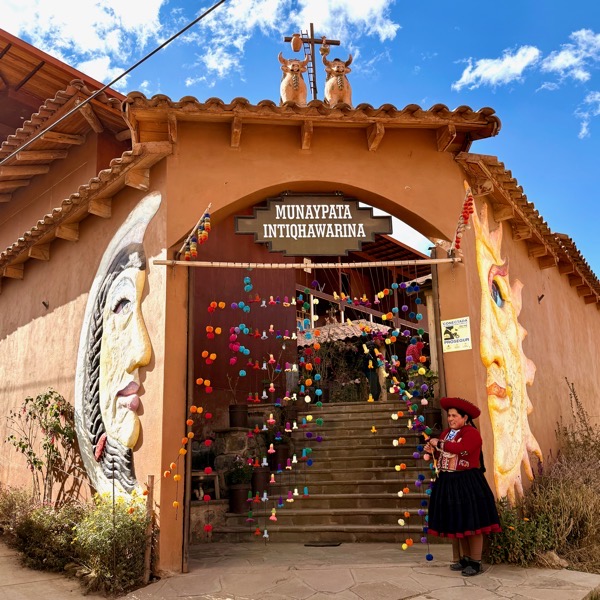
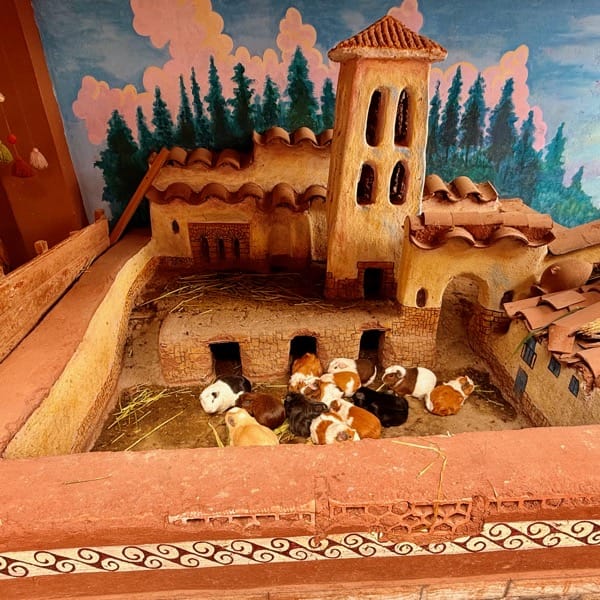
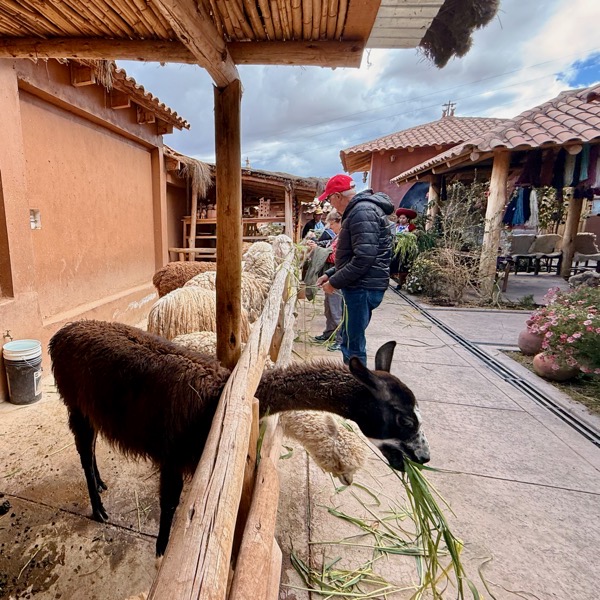
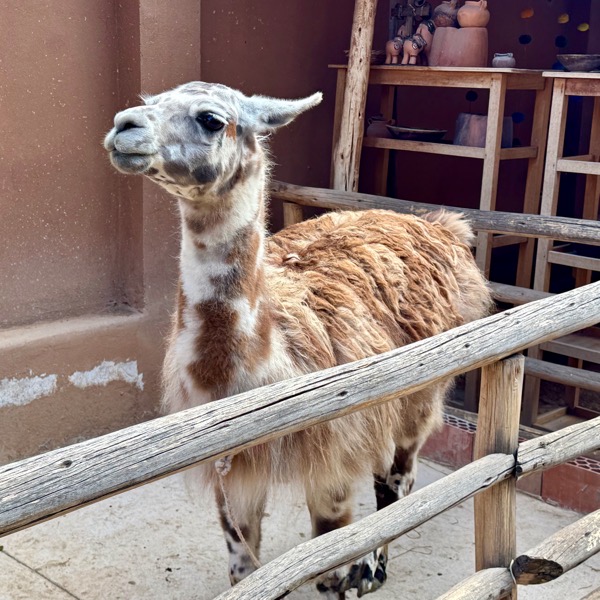
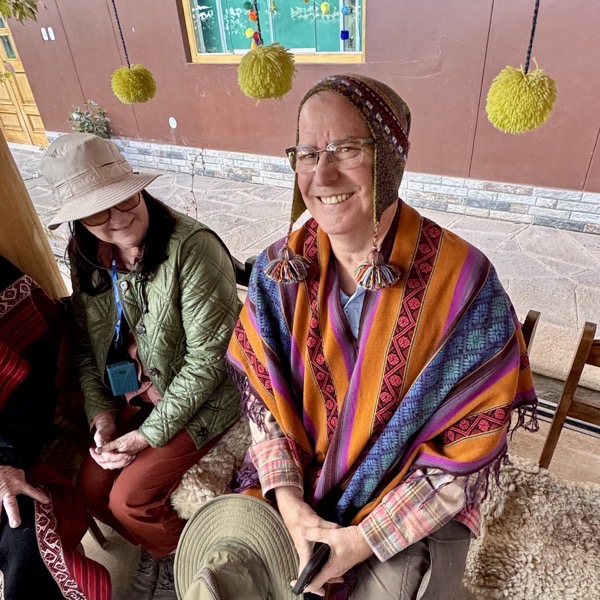
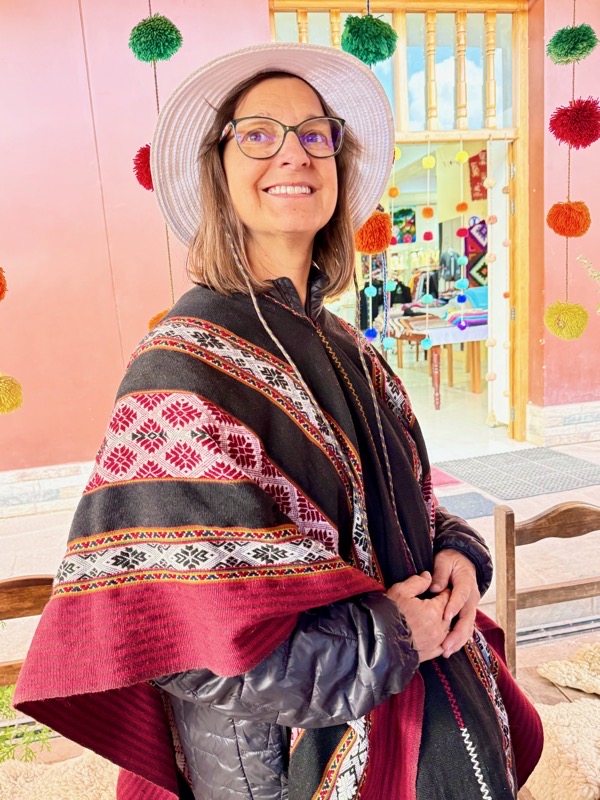
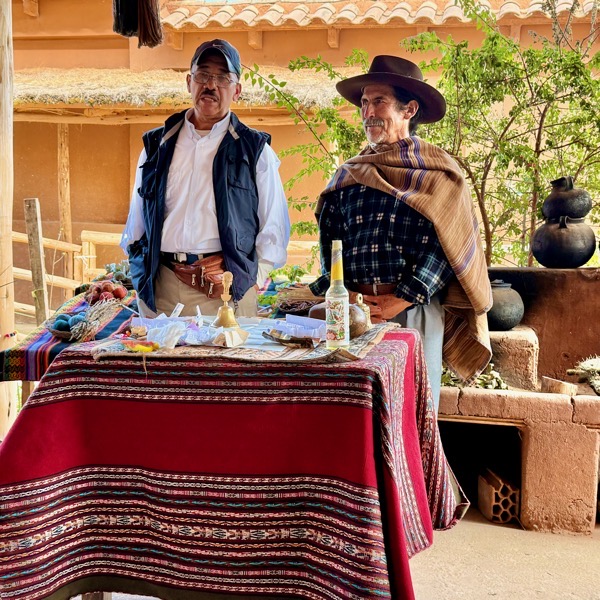
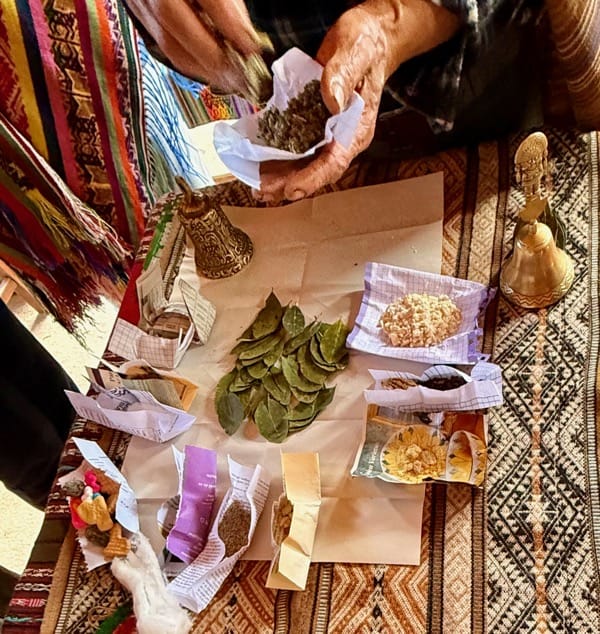
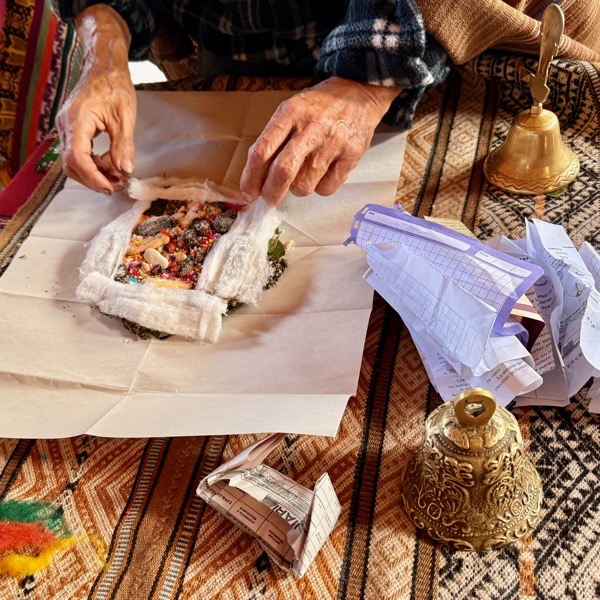
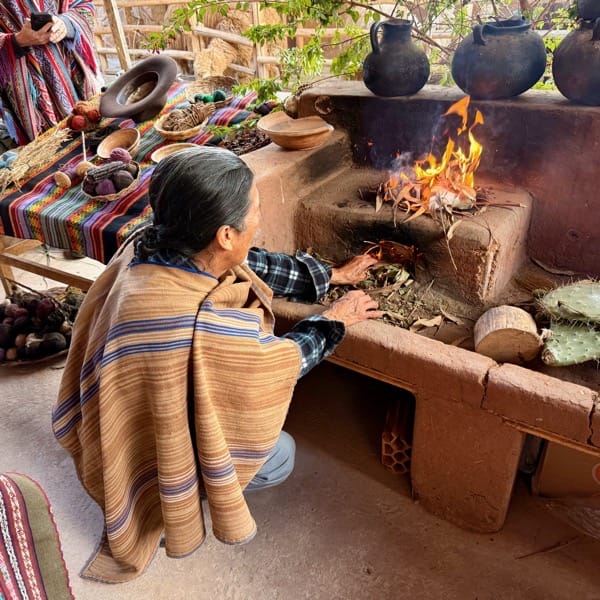
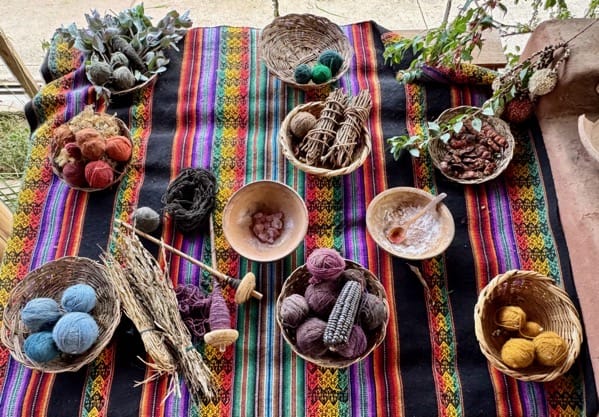
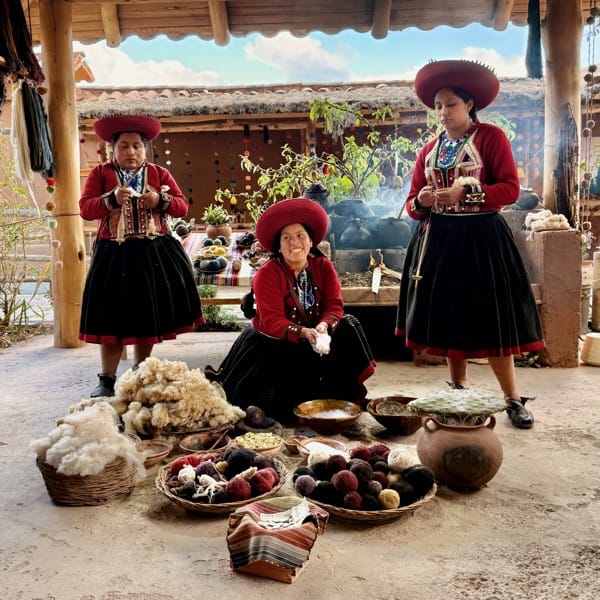
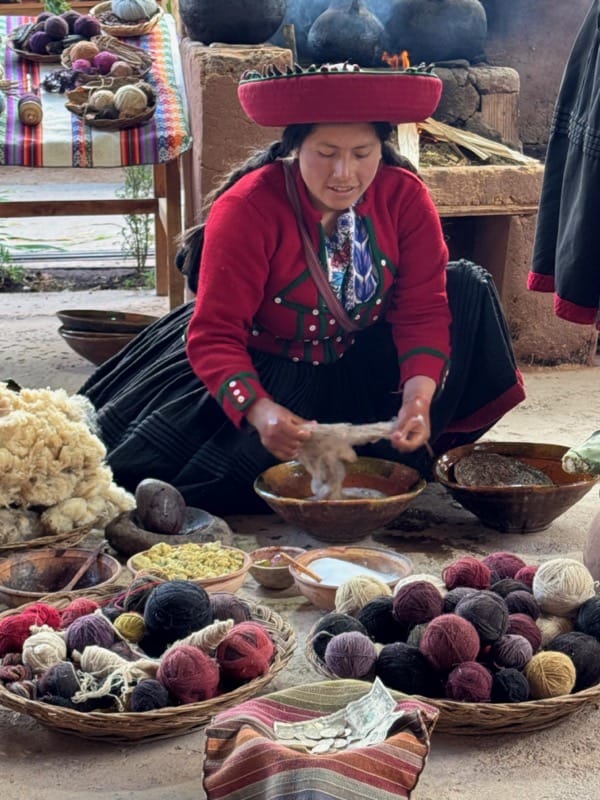
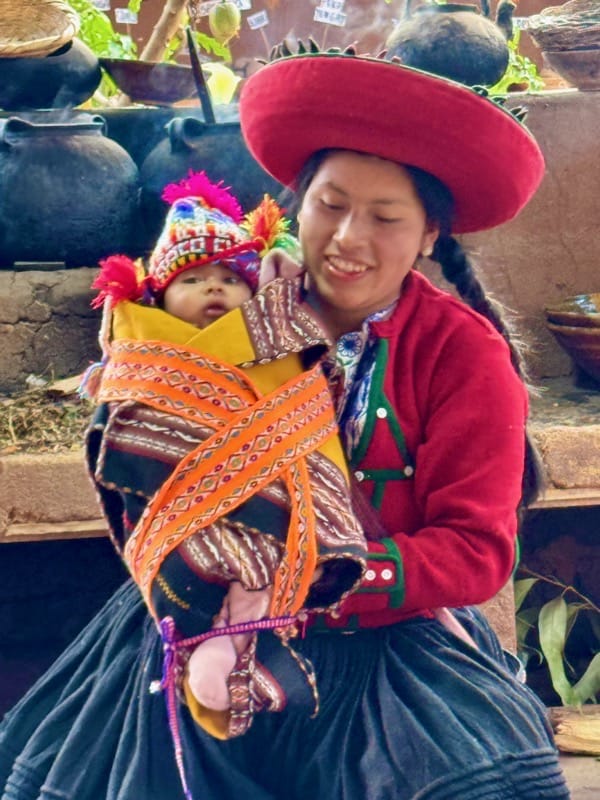
Back at the resort, we settled into our rooms and later joined the group for dinner at 6:30 p.m. in the elegant on-site restaurant. A musician dressed in traditional Andean attire played flutes and pipes throughout the meal, creating a soothing and immersive atmosphere that complemented the dining experience beautifully.
After dinner, Jane arranged for complimentary oxygen to be administered in our room. My blood oxygen levels had been reading in the low 80s—sometimes even lower—compared to the usual 95% or higher at sea level. The thin mountain air had been making it harder to sleep, particularly for Jane, so she hoped that getting the 10 minute oxygen treatment would help her rest more comfortably and be primed for tomorrow’s visit to Machu Picchu.
—— Evening at the Aranwa Hotel ——
